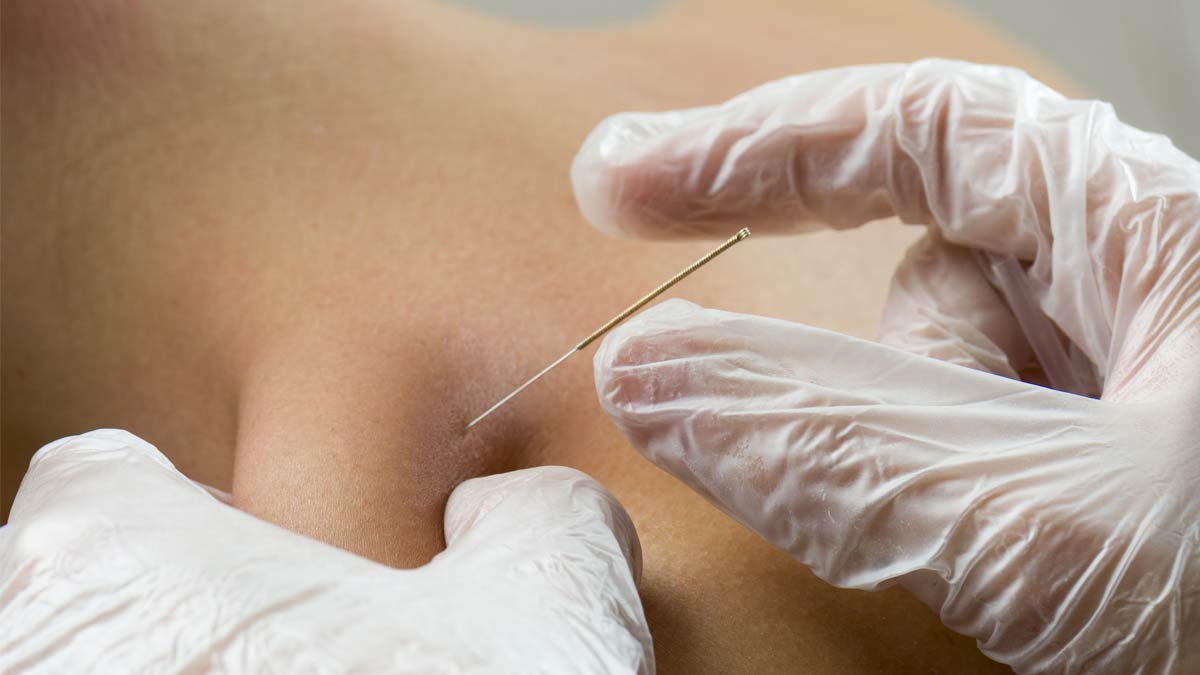The image of needles in health care might conjure up pictures of shots, having blood drawn, IVs and other procedures that create a bit of pain and discomfort in the name of overall health. So, for those who have never heard of dry needling, it might be hard to believe that a practice where a clinician, usually a highly-trained physical therapist, uses multiple needles to puncture the skin can actually provide relief from pain.
But pain relief is one of the biggest benefits of the practice of dry needling, said Erik Karpinski, PT, DPT, at CORA Physical Therapy in Myrtle Beach. It can help back, neck and shoulder pain, pain in other joints, as well as conditions like carpal tunnel and sciatica. Some patients also find increased mobility after their treatments, too.
The name “dry needling” is quite literal since the needles, like those used in acupuncture, don’t inject medication or any other substance into the skin. And unlike pain medication, dry needling has almost no side effects for most people, aside from a little soreness at the point of the poke. Although it is rare, it’s possible that a poorly-trained clinician could make a mistake and puncture a lung, which is known as pneumothorax. So it’s important to make sure you’re working with someone who is trained in dry needling. A quick Google search should tell you more about the person’s qualifications, but, if you’re unsure, don’t hesitate to ask before you make your appointment.
How does it work?
The specifics of what’s going on in the body are not entirely understood. In dry needling, which is also called trigger point dry needling and intramuscular manual therapy, the clinician will insert a thin needle through the skin and into the muscle, stimulating a myofascial trigger point and connective tissues. The needle relaxes the area, which can stop nerves from sending pain signals.
The practice allows physical therapists to access deeper into the body than they could with more traditional techniques.
“Dry needles allow the clinician to reach structures that are deeper than could be reached with traditional manual therapy and other soft tissue techniques,” Karpinski said.
If it sounds a lot like acupuncture, it’s because there are many similarities. Dry needling and acupuncture use the same kind of needles inserted in the skin at key points to relieve pressure and pain. The biggest difference is in the approach and the philosophy. Unlike acupuncture, a form of Chinese medicine that works with the body’s overall energy flow (or Qi), dry needling usually involves a smaller area of the body. It’s also based on Western understandings of anatomy and physiology.
As Karpinski put it, “Dry needling is derived from acupuncture but is more focused on a singular anatomical region of impairment and is more localized as opposed to redirecting the flow of energy.”
How do you know which treatment is right for you?
It really depends on your comfort level and your overall goals. If you’re already seeing a physical therapist, dry needling can be a wonderful complement to your existing treatment plan and can help you find relief faster.
“I’ve treated patients with ongoing pain for six or seven months that left the clinic pain free after only one needling treatment,” Karpinski concluded.
For more information on CORA Physical Therapy, call 866-443-2672 or visit www.coraphysicaltherapy.com.
By Erica Rodefer Winters






